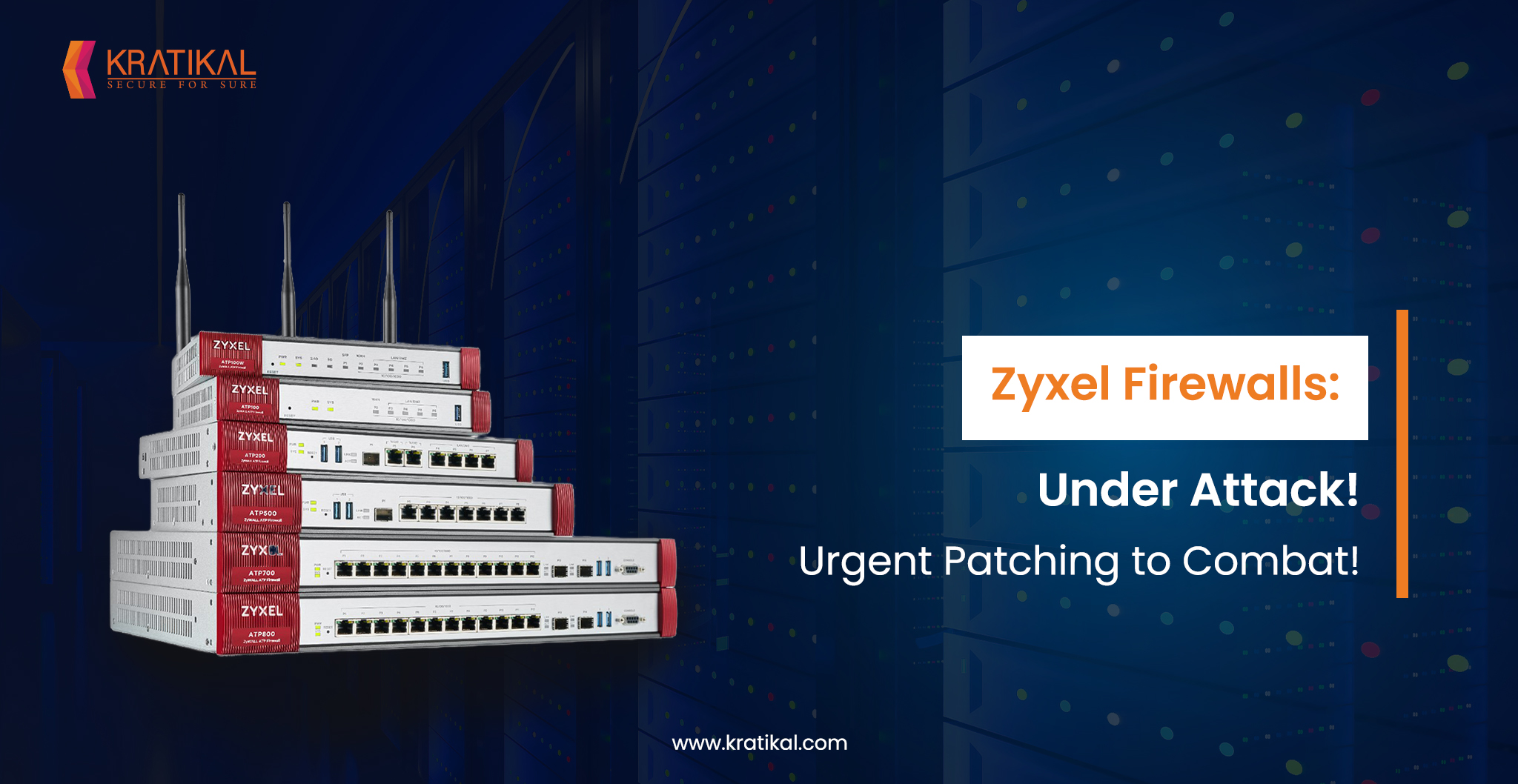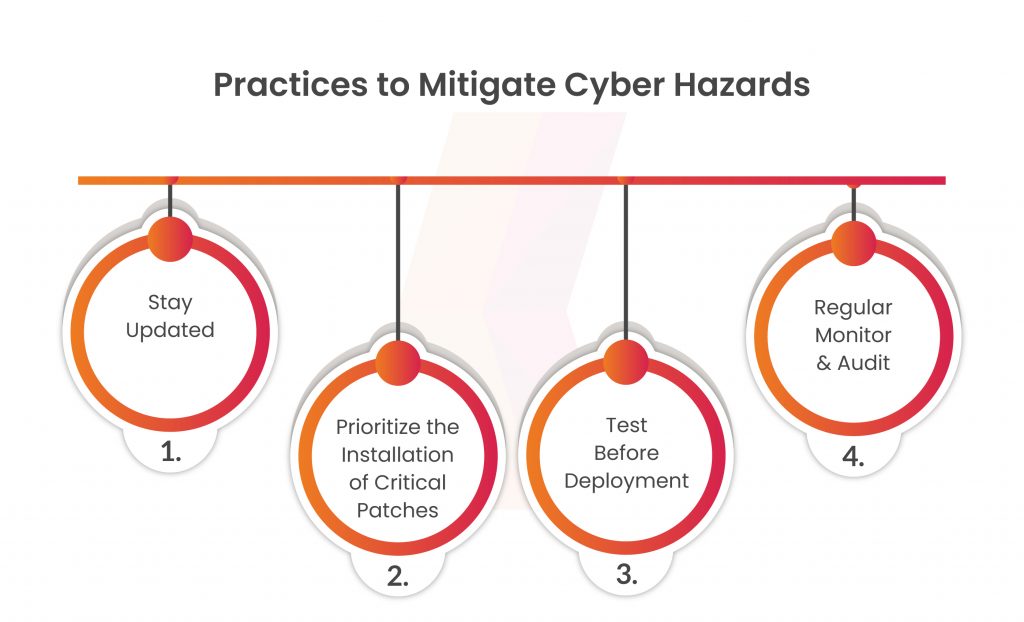
Table of Content
Introduction
Zyxel firewall helps to secure networks against threats and unauthorized access. In today’s world where we share a tremendous amount of data online, network security has become vital. It’s necessary for protecting sensitive data and preventing unauthorized access.
Despite being straightforward by nature, the majority of growing firms find it difficult to discover, test, and apply patch releases to solve issues as they arise. In actuality, it takes 102 days on average to patch. According to 57% of cyberattack victims, installing a patch would have thwarted the attack. 34% claim to have been aware of the vulnerability prior to the attack.
Staying up to date is very necessary for the cyber security industry. This can be done with the recent safety updates and bug fixes. Like all software, Zyxel Firewalls could have flaws that hackers might use against them. One may considerably lower the risk of attacks and unauthorized access to your network by prioritizing timely patching.
To give users the best possible protection, a firewall must prioritize routine fixing due to the constantly changing landscape of cyberattacks. This blog will explain the significance of patching and offer helpful advice for securing your network with Zyxel firewalls.
Understanding Zyxel’s Firewall flaw
Zyxel works on tracking the incoming and outgoing network traffic. It is also managing the network. By analyzing data packets and implementing security regulations, they serve as a barrier between a company’s internal network and the world outside.
Various attacks play a major role to affect Zyxel’s firewall. The types of threats can be DDoS attacks, insider attacks, server misconfiguration, and many more. This gives access to attackers to gain remote code execution without any authentication.
The Denial of Service (DoS) vulnerability affects VPNs and Zyxel firewalls. This allows an attacker to send fragmented packets and shut down the service.
Addressing Vulnerability in Zyxel Firewall
The recent patch issue came up from Zyxel. They tried to fix these vulnerabilities and reduce potential risks brought on by possible memory manipulation, unauthorized code execution, or service interruption. These vulnerabilities were:
This vulnerability which has been assigned CVE-2023-33009 observes that any unauthenticated attacker might benefit from this. This benefit could be a buffer overflow vulnerability that might result in remote code execution or DOS situations. This vulnerability has observed a critical severity rating of 9.8.
This vulnerability which has been assigned CVE-2023-33010 impacts to activate an unauthorized attacker to use a buffer overflow. This helps the attacker to execute code remotely or cause a Denial of Service. This vulnerability has observed a critical severity rating of 9.8.
Cybersecurity here comes into play in strengthening the security stance of the products and safeguarding consumers from potential abuse. One can execute the updation of such serious vulnerabilities. To stay secure in a changing threat environment, users should exercise caution and prioritize installing security updates.
How can one secure a firewall?
One can follow these simple ways to secure a firewall
- Update the firewall’s firmware periodically in order to make sure it has the latest security patches and enhancements.
- Add strong passwords to secure your firewall. You should also think about turning on multi-factor authentication for an additional layer of security.
- Set firewall rules so that only essential network traffic is allowed and that unauthorized access attempts are blocked.
Urgent Patching in Firewall
A firewall or any software can have many vulnerabilities as recently identified. So, it is important to update them immediately. If these vulnerabilities are not fixed, your network may be insecure. The flaws are exploited by the hackers and this is where updation comes in role. This is done to get around security systems and launch DDoS attacks.
They can do enough harm to get into networks. This steals private information or even takes over the firewall without authorization. Patching quickly reduces these threats and improves the overall security of your network.
Patches are intended to improve operational efficiency. They also help in reducing security risks in current software, computers, servers, and technological systems.
Best Practices to mitigate cyber risk
Stay updated: By keeping in the loop with the latest security updates and alerts, one can stay updated and aware of such attacks. To stay up with the newest fixes and vulnerabilities, frequently check their official website, and sign up for their security alerts. It is also advised to join relevant forums or mailing lists.

Prioritize the Installation of Critical Patches: Examine the severity of software updates and give priority to the critical updates which resolve high-risk vulnerabilities. Implement a structured patch management procedure to guarantee prompt network deployment.
Test Before Deployment: Conduct extensive testing in a controlled environment before delivering patches on servers to find any potential compatibility problems. There could be a case of unintended repercussions for the same. This reduces the interruption in network operations.
Regular Monitor and Audit: Regularly audit and monitor your firewalls’ functionality as well as their security status. Conduct routine testing using VAPT to find any vulnerability in the security system that could jeopardize the security of your network and shield the organization from cyber threats.
Conclusion
Protecting your network has become more essential than ever because of the frequent sharing of data and the growing number of online threats in the modern digital age. However, immediate upgrading is necessary to guarantee their continuing efficacy.
In such a scenario, a cybersecurity company may be instrumental in guiding firms in safeguarding their firewalls and strengthening overall network security. Kratikal, a CERT-In empanelled industry specializes in finding network vulnerabilities and offering all-inclusive solutions to reduce risks. We provide a wide range of cybersecurity services that can help with the effective updation of servers and attack defense.
Our experts stay updated on the most recent cyber threats and security policies to appropriately secure your firewalls. By utilizing Kratikal’s services, you may improve the security stance of your network and lower the probability of successful cyberattacks.
Kratikal may additionally provide insightful advice on the most effective ways to update the firewall. Professionals can help establish an organized patch management procedure, help determine the most important upgrades, carry out exhaustive testing, and automate update releases. We also assist with routine network security auditing and monitoring. This helps with the configuration or fixing by patching.
To safeguard your firewalls and defend your network from online threats, updating is necessary. In this effort, collaborating with a reputable cybersecurity company can be extremely helpful. Protect your organization’s private information and keep up a strong line of defense against new online threats.


